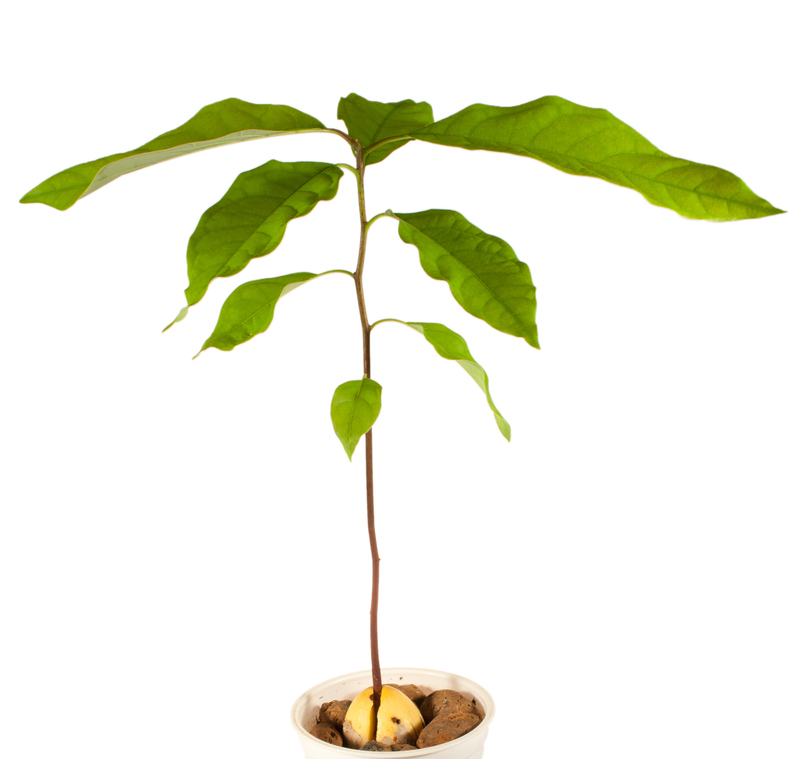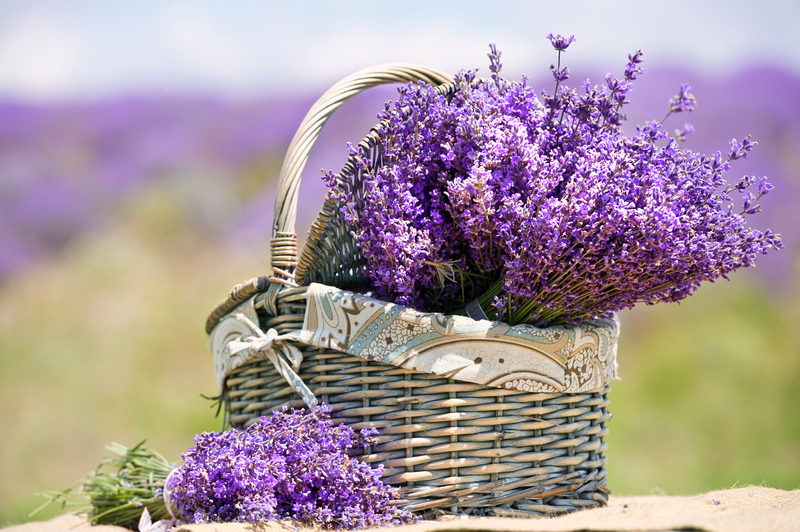Cold Weather Plant Care: Shield Your Garden in Winter
Posted on 18/08/2025
Cold Weather Plant Care: Shield Your Garden in Winter
As the days grow shorter and the chill sets in, cold weather plant care becomes crucial for every gardener wanting to protect their beautiful landscapes. Even the most resilient plants need attention when winter rears its icy head. Whether you're working with delicate ornamentals or hardy perennials, knowing how to shield your garden in winter ensures lush blooms and healthy growth come spring.
Understanding Your Garden's Winter Needs
Every garden has its unique microclimate, plant palette, and vulnerabilities. Proper plant care in cold weather requires you to assess:
- Ambient temperature ranges
- Frost frequency and severity
- Wind exposure
- Soil moisture and drainage capacity
- Snow and ice accumulation patterns
Why is this important? Because cold season garden protection strategies must be tailored to your garden's specific risks. For instance, evergreens can be more at risk from wind desiccation, while tender specimens typically succumb to root freezes.

Recognizing How Cold Affects Plants
Cold weather impacts plants in multiple ways. Freezing temperatures can:
- Damage roots, stems, and buds
- Desiccate leaves by pulling moisture out
- Disrupt water uptake as soil freezes
- Stress or kill tender species not adapted to frost
It's essential to recognize signs of damage, such as wilted foliage, mushy stems, or browned leaf tips--all indicators your winter plant care efforts need to be stepped up.
Comprehensive Strategies for Winter Plant Protection
1. Mulching: Winter's Protective Blanket
One of the best winter gardening tips is mulching. A thick layer of organic mulch (straw, shredded bark, or leaves) acts as insulation:
- Reduces temperature swings
- Retains soil moisture
- Prevents heaving (roots pushed out by freeze-thaw cycles)
- Adds nutrients to soil as it breaks down
Apply 2-4 inches of mulch after the first hard frost, but avoid piling it directly around trunks to prevent rot and rodent damage.
2. Watering: Moisture Matters Even in the Cold
While many gardeners pull back on watering in fall, winter plant care still demands attention to soil moisture. Frozen soil means less available water for roots.
- Water deeply before the ground freezes.
- Avoid overhead watering late in the day, as lingering moisture can promote freezing injury.
- Check containers and raised beds often - they dry out faster than ground soil.
Plants that enter winter well hydrated can better withstand harsh, drying winds and surviving frosts.
3. Covering Plants: Protection from Frost and Wind
For tender or recently planted specimens, physical barriers offer major rescue. Consider:
- Frost cloths, burlap, or old bed sheets to cover shrubs, perennials, or young trees on frosty nights
- Cloches, plant domes, or even upside-down buckets for small, vulnerable plants
- Windbreaks such as fences or strategically placed evergreens for exposed gardens
Always support covers with stakes or frames if necessary; leaves and stems in direct contact with covers can still freeze.
4. Pruning and Cleaning: Minimizing Disease and Stress
Late fall and early winter are ideal times to tidy up:
- Remove diseased or dead material to reduce pests and fungi
- Cut back tender perennials and annuals
- Prune broken or damaged limbs, but avoid major pruning of woody plants until late winter
A clean garden is more resilient against winter's onslaught and sets the stage for a vibrant spring.
5. Overwintering Container Plants
Plants grown in containers are far more susceptible to winter damage, as their roots aren't as insulated.
- Move pots to sheltered locations: Up against house walls, inside garages, or cold frames
- Wrap containers in bubble wrap or burlap for extra insulation
- Cluster pots together to share warmth and protect from wind
- Check moisture periodically; don't let containers dry out completely
6. Utilizing Cold Frames and Greenhouses
If you're serious about winter plant protection and want a head start on spring, cold frames and greenhouses are ideal.
- Cold frames trap heat, letting you overwinter leafy greens, herbs, and young perennials.
- Greenhouses offer full control over moisture, temperature, and light, shielding your winter garden from the harshest weather.
Pro Tip: For budget-friendly solutions, even a simple DIY plastic tunnel over raised beds extends the growing season.
7. Selecting Winter-Hardy Plants
Not all plants are created equal when it comes to cold tolerance. For long-term resilience:
- Choose native or cold-hardy varieties suited to your climate zone
- Refer to the USDA Plant Hardiness Zone map for guidance
- Consider evergreens, hellebores, ornamental grasses, and conifers for consistent winter structure
Investing in the right plant selection is one of the most effective forms of winter garden care.
Common Garden Mistakes to Avoid in Winter
- Over-fertilizing near winter: Can stimulate tender growth that's more susceptible to frost.
- Neglecting irrigation completely: Roots still need water, even if the tops of plants seem dormant.
- Piling mulch against woody stems: Can result in rot and pest hideouts.
- Ignoring forecasts for sudden cold snaps: Be ready to cover or move sensitive plants when temperatures plummet.
- Forgetting to check evergreens: Broadleaf evergreens often lose more water during winter wind than in summer heat!
Regional Cold Weather Plant Care Recommendations
Northern Climates
- Stick with ultra-hardy perennials and shrubs
- Apply thicker mulch (4-6 inches) after the ground freezes
- Use windbreaks to minimize desiccation in open landscapes
Moderate and Temperate Climates
- Cover tender plants only during nights with predicted hard frosts
- Water during dry spells, especially for evergreens
- Mulch to reduce weed competition and temperature wobbles
Mild Winter Areas
- Protect from erratic temperature swings and wet conditions
- Watch for fungal diseases; ensure good air circulation
- Use lightweight row covers to shield from rare frosts
Special Considerations: Houseplants and Tender Exotics
Don't forget your indoor jungle! Winter plant care for houseplants involves:
- Reducing watering as growth slows and sunlight wanes
- Keeping them away from drafty windows and heating vents
- Providing supplemental light if days are especially short
- Inspecting for pests like spider mites, which thrive in dry winter air
Move sensitive exotics--like citrus or tropicals--indoors before the first frost and gradually acclimate them to warmer, less humid conditions.
Planning Ahead: Preparing for Future Winters
Excellent winter garden protection is easier when it's part of a year-round strategy:
- Incorporate windbreaks and hedges into landscape design
- Amend soil each fall to boost structure and drainage
- Test new mulch and plant types in trial beds
- Journal what worked and which plants struggled in past winters

Frequently Asked Questions on Cold Weather Plant Care
How often should I water my garden during winter?
Water when the ground isn't frozen and rainfall is low, about every 2-4 weeks for most gardens, but check soil moisture before watering. Container plants may need more frequent checks.
Is it better to mulch in fall or spring?
Always mulch in fall after the first hard frost. This helps stabilize soil temperature and moisture through winter. Top up in spring as needed.
What should I do if a surprise frost is forecasted?
Quickly cover tender plants with a frost cloth, old sheets, or boxes. Remove covers once temperatures rise the next morning.
Can I use plastic to cover my plants during cold weather?
Plastic can trap moisture and ice against plants, causing harm. If you must use it, ensure it doesn't touch plant tissue and vent it each morning.
Should I fertilize plants during winter?
No, avoid fertilizing late in the year. It spurs new growth vulnerable to freezing. Resume light feeding in early spring.
Conclusion: Nurture Your Garden with Smart Winter Plant Care
Shielding your garden in winter is all about preparation, observation, and adaptation. Focus on retaining soil warmth, preventing desiccation, and selecting regionally-appropriate plants. Cold weather plant care isn't just about survival--it paves the way for thriving, bountiful gardens when spring finally arrives. Invest your time in these best practices, tweak them to fit your local conditions, and enjoy a healthy garden year-round.
Remember, the key to successful cold season plant protection is consistency and vigilance. Stay one step ahead of winter weather, and your landscape will reward you with beauty for seasons to come.

